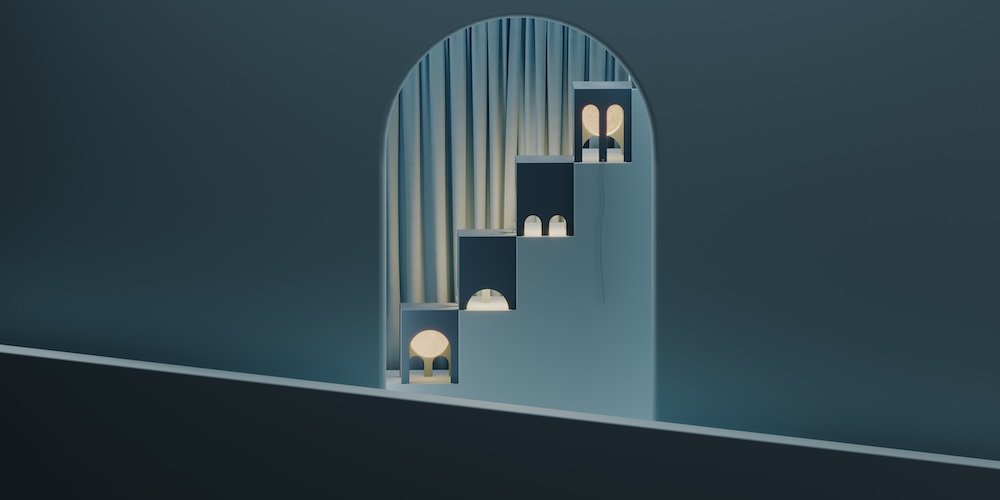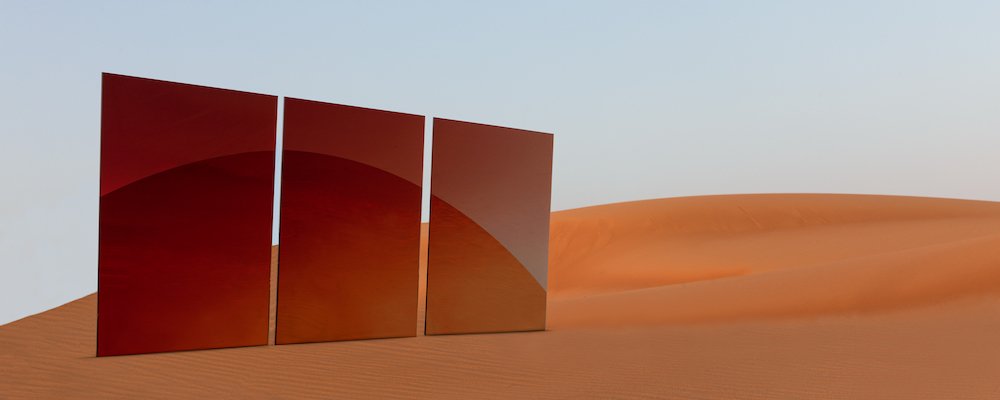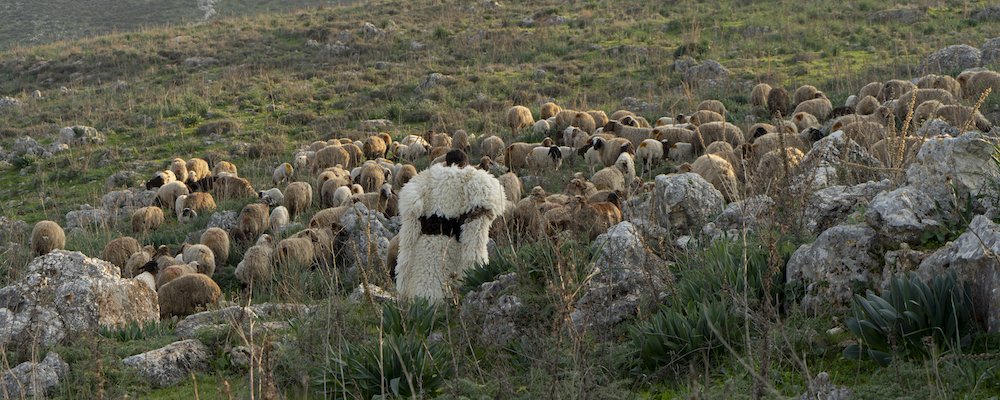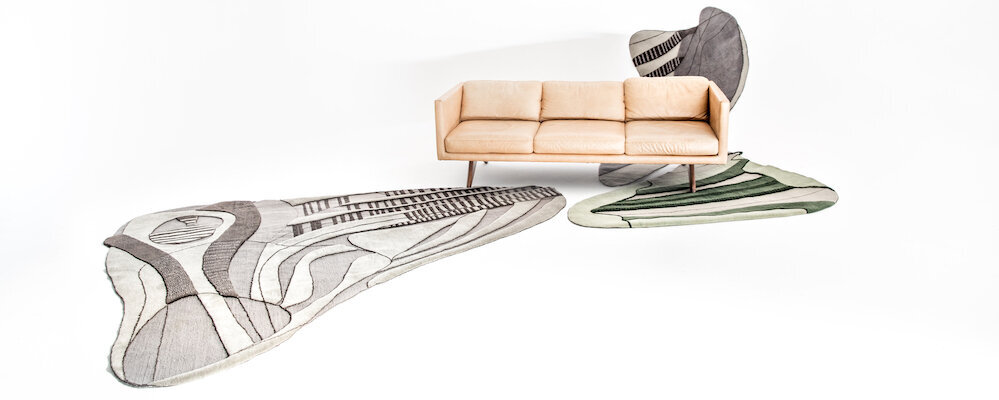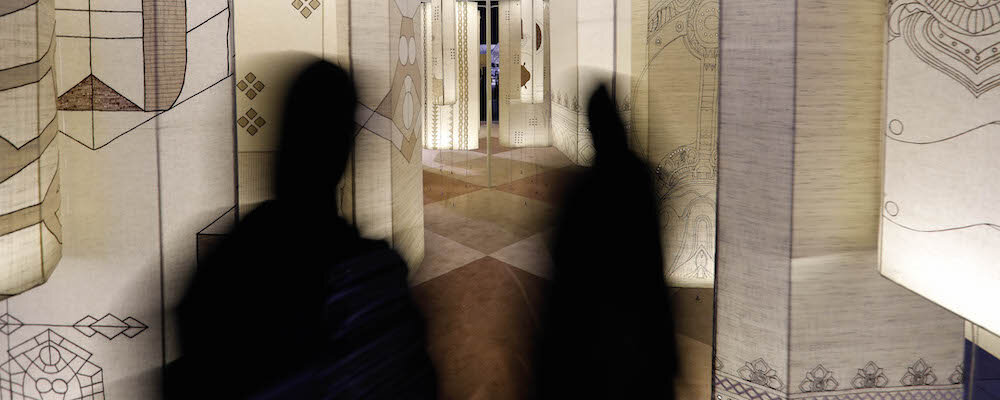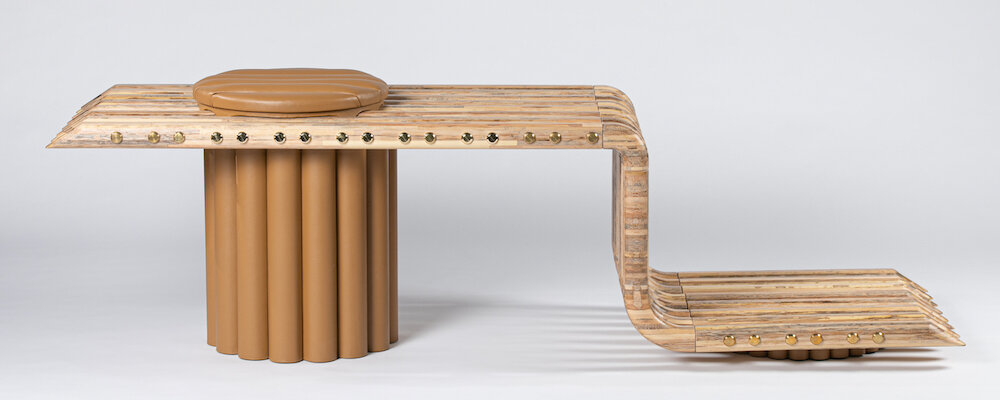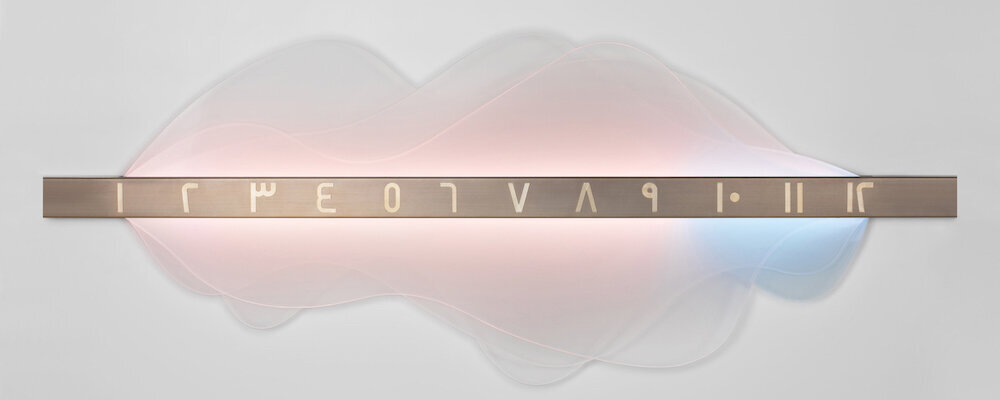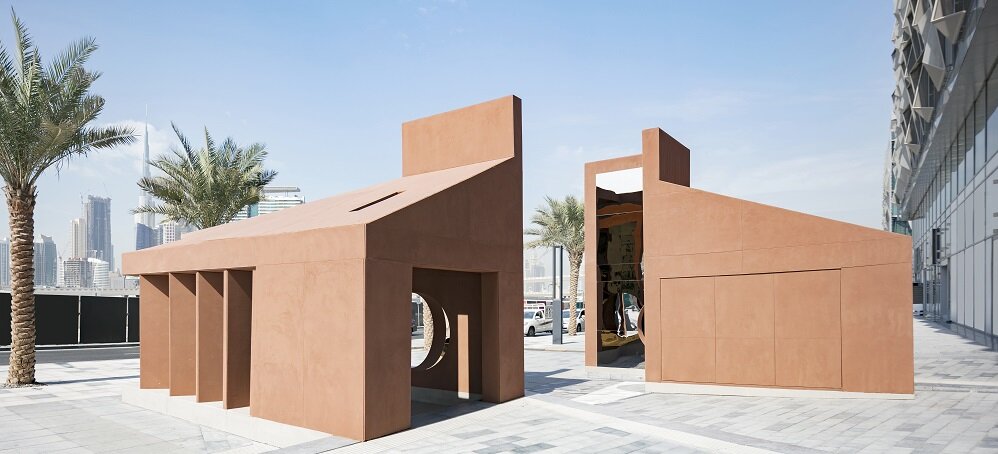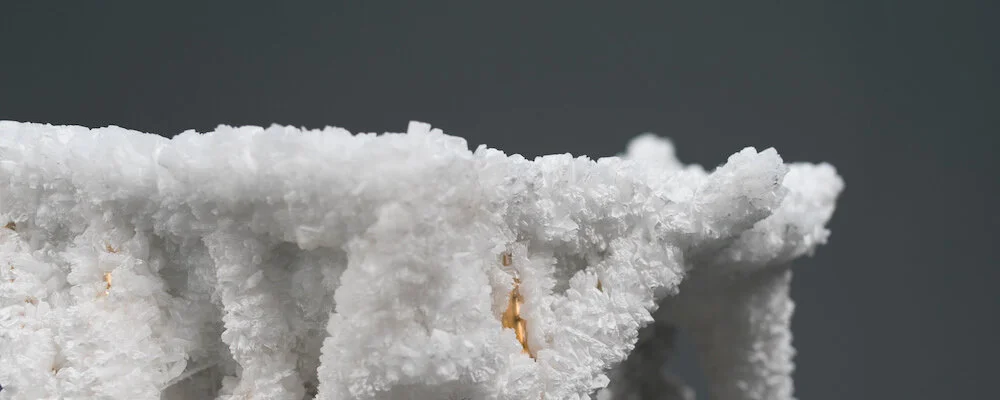Melbourne Design Week 2021 - Design projects
For the last of our articles dedicated to the 2021 edition of Melbourne Design Week, we look at few design and architecture projects presented during the festival.
Wonderstruck
Wonderstruck presented by One Two One Two, asks the participating designers and artists to imagine their own version of a happy place. It’s fair to say that the last 18 months have been plagued by the grim realities of a world in crisis. We want to bring awe and wonder into dark days.
Ideas that err on the side of fantasy than real world application, bright colour palettes and hypothetical digital environments—an escape from the present into a world of adventurous forms and fanciful outlooks.
Danielle Brustman - Dean Toepfer - Jordan Isabella - Jessica Herrington - Kerryn Levy - Ayano Yoshizumi (picture left) - Andrew Carvolth - Elliot Bastianon (picture above)
Venue: 124 Exhibition St, Melbourne 3000
Fireflow
Fireflow, by Craft Victoria, brings together five contemporary artists exploring the possibilities of glass as a versatile medium. The exhibition presents the works of Alexandra Hirst (SA), Blanche Tilden (VIC), Jasmine Morgan Ryan (VIC), Holly Grace (VIC) and Tim Edwards (SA, picture above) demonstrating new thinking and approaches to the centuries-old practice of glassmaking. Works exhibited show a mastery of materiality, process and technique alongside experimentations with form. Long-established methods are used alongside new technologies, forging future directions in the craft.
Waterfront: ‘Mushi’ - Concept to Prototype
An exciting new collaboration between Arup, Swinburne University and Studio Edwards is being trialled in the Royal Botanic Gardens Victoria, Melbourne Gardens. The floating wetland prototype affectionately known as ‘Mushi’ (pronounced ‘moo-she’) will test how mycelium (the roots of fungi) can harbour plant growth to clean our chemically sensitive rivers, making future-proof bio-ecologies.
The floating wetland will be created from a series of interlocking triangular-shaped modules about 800mm in diameter. The modules are composed of a mixture of mycelium and local organic waste. The mycelium material is set within specially designed moulds and expands to form the structure of the floating wetland. Above the surface, native wetland plants will grow within the compound which creates habitat for insects and birds.
This is a tangible opportunity to test and assess the mycelium floating wetland concept that marks the first trials of floating mycelium-based structures. Shortlisted as an entry for the Victorian Design Challenge 2019.
Online Presentation - Tuesday 30 March, 12pm – 1.30pm
FREE – booking required
Tune-in live for this online presentation, and join members from Arup, Swinburne, Studio Edwards and Royal Botanic Gardens. Learn how the project evolved and its journey to date, including challenges, successes and outlining what future sustainable products could look like.
Installation: Melbourne Gardens - Friday 26 March – June 2021. Visit ‘Mushi’ at the Melbourne Gardens. The installation will explore the benefits and challenges of developing pure organic products to directly replace plastics in waterways, representing the future of sustainable materials.
Event co-presented by Arup, Swinburne University, Royal Botanic Garden Victoria, Studio Edwards and EcoNursery. Waterfront is presented by Centre for Architecture Victoria | Open House Melbourne, in partnership with Department of Environment, Land, Water and Planning and East Gippsland Shire Council and East Gippsland Shire Council.
Humanity-Centred Design: Designing The World First Coral ‘Ark’
Presented by Contreras Earl Architecture, Great Barrier Reef Legacy, Werner Sobek, Arup
Join online the team overseeing the world’s first dedicated coral conservation facility, the Living Coral Biobank, for a live conversation on designing for humanity.
The Living Coral Biobank aims to secure the long-term future and biodiversity of corals worldwide which are under severe threat due to climate change. Designed by Australian architects Contreras Earl Architecture, with leading engineering and sustainability consultants Arup and Werner Sobek for the Great Barrier Reef Legacy, the primary goal of the facility is to keep alive and nurture over 800 species of the world’s hard corals.
The new building typology – a ‘living ark’ – will be the only dedicated facility of its kind in the world. Through its innovative design and engineering it will be a world leader in next-generation renewable energy design, creating optimal conditions for coral storage while minimising energy consumption and solar gain.
The Living Coral Biobank will be located at the gateway to the Great Barrier Reef in Port Douglas, North Queensland, Australia.
Panelists include: Rafael Contreras, Monica Earl, Dr Dean Miller, Richard Vincent, Thomas Winterstetter.
Friday, March 26th, 5:30 pm - 6:30 pm. Book here.

